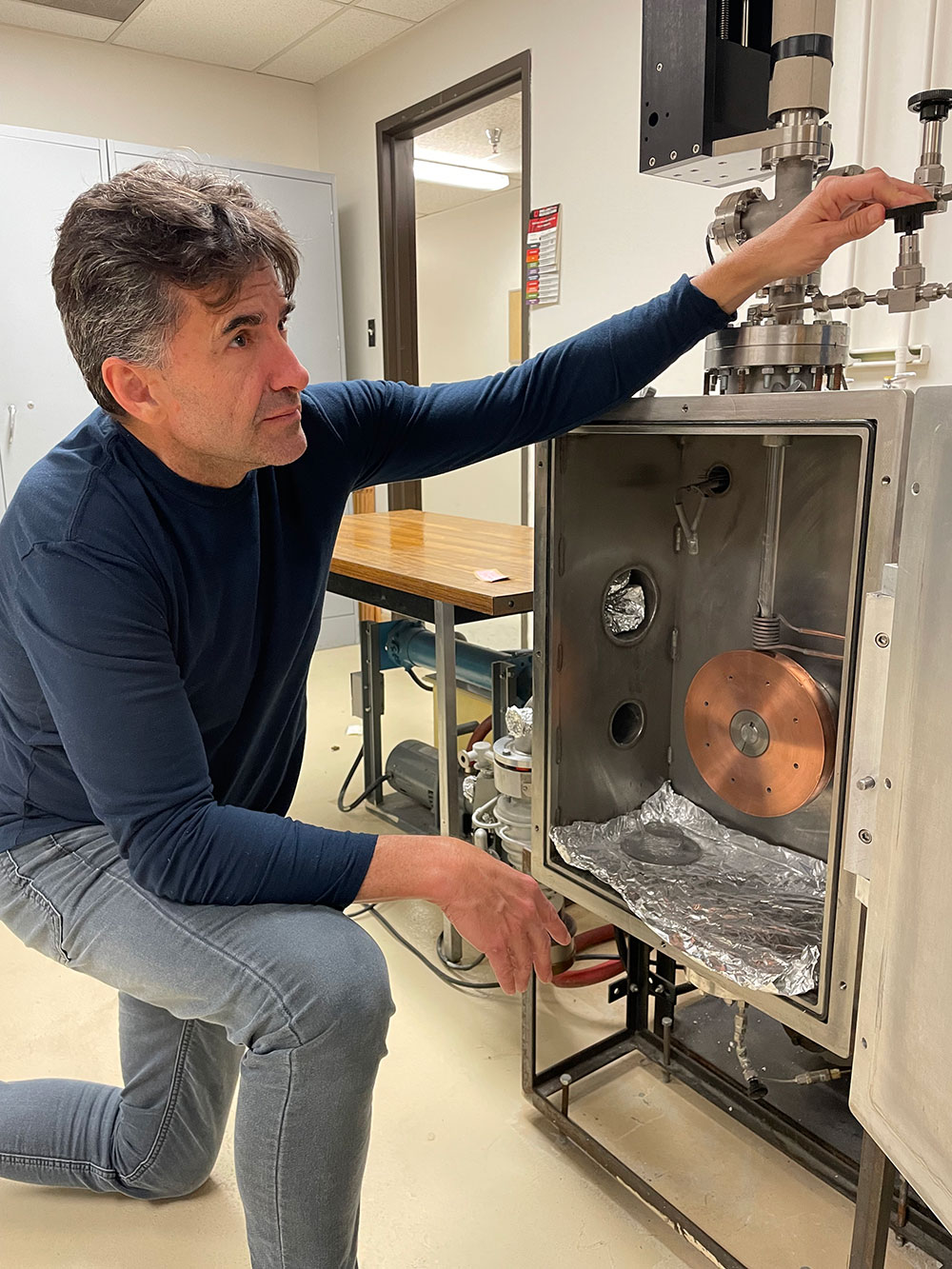A major environmental concern about the use of nuclear reactors is what's left behind - the nuclear waste from spent fuel rods. Where to dispose of this waste has been the source of much controversy.
But instead of just burying the spent fuel rods, what if you could somehow recycle them to be used again? University of Utah engineering researchers will be working with a team from the Idaho National Laboratory (INL) to develop an innovative yet simple process of recycling metal fuels for future advanced nuclear reactors. These reactors are designed to be safer than existing reactors, more efficient at producing energy, and cheaper to operate. The team was awarded a three-year, $2.1 million grant from the U.S. Department of Energy's ARPA-E program for the project.
"With current light water-cooled nuclear reactors, you use the fuel for only about five years, then what do you do with it? Where do you dispose it? We currently have no place to put it other than on the site of the nuclear power plant that used it," says University of Utah materials science and engineering professor Michael Simpson, who will lead the U team supporting the project. "A better idea is to use a physical or chemical process to make the fuel usable in the reactor again."
According to the Department of Energy, there is currently no permanent repository for spent radioactive fuel rods, so the more than 83,000 metric tons of nuclear waste are stored in more than 75 reactor sites around the U.S. in either steel-lined concrete pools of water or in steel and concrete containers. They will stay there until a consolidated interim storage facility or permanent site is established.
A key step to solving this problem is to demonstrate and commercialize advanced nuclear reactors such as the sodium cooled fast reactor (SFR) that features metallic uranium fuel designed with recycling in mind. Simpson will collaborate with the INL team that originally conceived of the method, which involves a dynamic heat treatment of the spent fuel rods from SFRs. In theory this will cause unrecyclable waste to be separated from the fuel materials that can be used again. Simpson says the remaining waste that needs to be disposed of in this process would be at least an "order of magnitude" less in volume than the original untreated amount. Furthermore, they will be able to utilize the large fraction of fissionable material to produce power that would otherwise be thrown away.
"We reduce the volume of nuclear waste that has to be disposed of, and we get more energy in the long run," he says.
The U team will develop a computational model of the separation of the different metals in the heating process and collect data from a new furnace system that will be designed and purchased with the funding from the grant to validate the model.
Simpson expects the first advanced nuclear reactors that could use this recycling process could go online by the 2030s. Currently, there are 94 commercial nuclear reactors in the U.S. based on light water reactor technology that all told generate nearly 20% of the nation's total energy each year. Some advanced reactors such as SFRs could use a fuel that is more suitable for recycling, as will be demonstrated in this project.
"This process will help pave the way for sustainable nuclear energy with minimal environmental impact and allow the U.S. to produce more energy while better addressing the global warming issue," Simpson says. "We want to transition away from coal and natural gas to renewable and nuclear energy for producing electricity. This allows us to continue to use nuclear energy without worrying about this unsolved nuclear waste problem. Instead of just directly disposing it, we can recycle most of it and produce much less nuclear waste."
The INL/University of Utah project is one of 11 to receive a total of $36 million for research from ARPA-E to increase the deployment and use of nuclear power as a reliable source of clean energy while limiting the amount of waste produced from advanced nuclear reactors.
This project is just the newest collaboration between researchers from the U's College of Engineering and College of Mines and Earth Sciences with INL scientists who are developing new technologies for nuclear energy, communications, power grids, and more.
Last month, the University of Utah and INL announced a new formal research partnership between both institutions that will explore deeper research collaborations and expand opportunities for students, faculty, and researchers.
About Idaho National Laboratory
Battelle Energy Alliance manages INL for the U.S. Department of Energy's Office of Nuclear Energy. INL is the nation's center for nuclear energy research and development, and also performs research in each of DOE's strategic goal areas: energy, national security, science and the environment.







